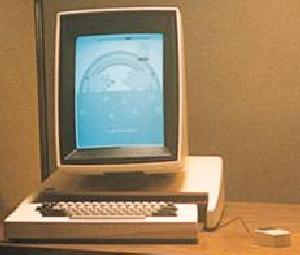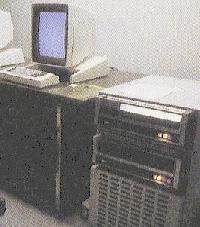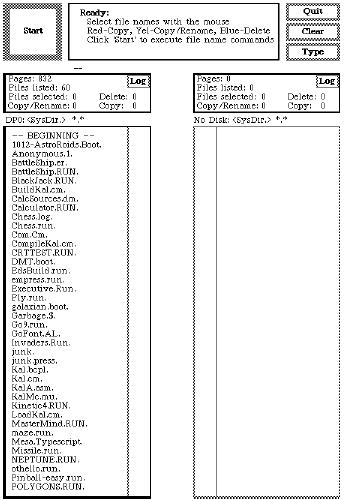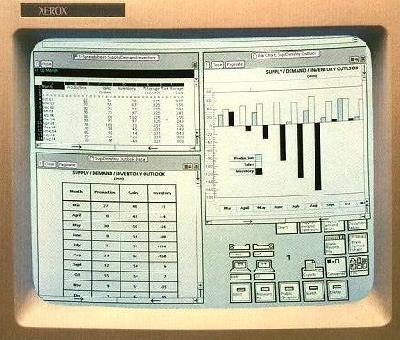.

| The Xerox Alto Computer |

 |
The Alto consists of four major parts: the graphics display, the keyboard, the graphics mouse, and the disk storage/processor box. Each Alto is housed in a beautifully formed, textured beige metal cabinet that hints at its $32,000 price tag (1979US money). With the exception of the disk storage/processor box, everything is designed to sit on a desk or tabletop. |

| The concept of using a visual interface originated in the mid 1970s
at the Xerox Palo Alto Research Center (PARC) where a graphical interface
was developed for the Xerox Star computer system introduced in April 1981.
The Xerox Star did not experience any commercial success, but its ideas were copied by Apple Computer, first in the innovative Lisa in 1983 and then in the Apple Macintosh introduced in January 1984. The Mac used the Motorola 68000 32-bit CPU running its own proprietary operating system. The primary new application that made the Mac popular was graphical desktop publishing. |
 |
